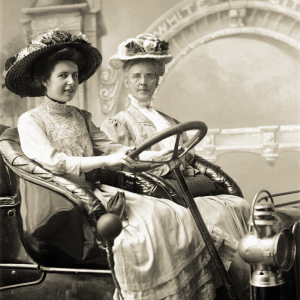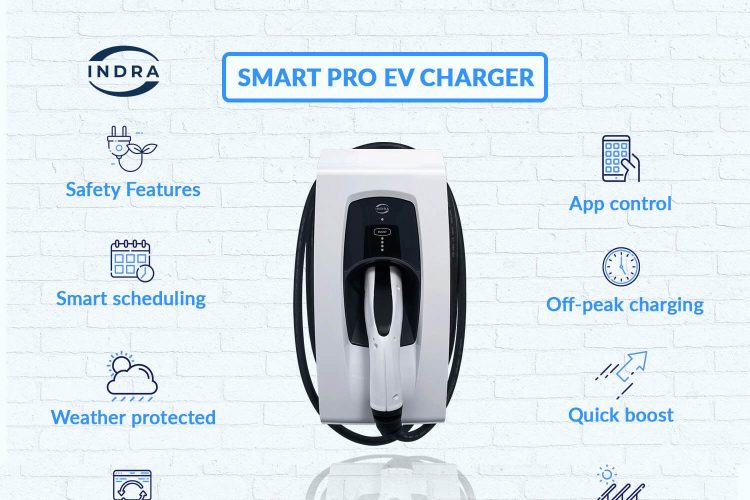It may seem like EVs are pretty modern and new as they have been increasing in popularity over the past few years with very futuristic designs and innovative technology. The true inventor of the electric car is still being debated today but can be traced back to some point in 1832 and 1835. While the exact year remains a speculation, we do know for sure that a Scottish man named Robert Anderson invented the first electric carriage with crude non-rechargeable batteries.
In the US, the first successful electric car made its debut in 1890. It was built by a chemist in Iowa called William Morrison and was a 6-passenger vehicle which could go a top speed of only 14miles per hour.

Over the next few years after that, EVs were built across the US with New York having a fleet of 60 electric taxis. By 1900, EVs accounted for about a third of all vehicles on the road in America and their popularity only grew in the early 1900s.
As EVs came onto the market, so too did combustion engine vehicles. While these combustion engine vehicles had promise, at the time they were much more inconvenient. They had gears, needed to be started with a hand crank and were very noisy and smelly.
Electric cars weren’t associated with any of the drawbacks that came with combustion engine vehicles at the time and so were still seen as the better option. EVs became very popular in urban areas, especially with women. They were perfect for short city trips and with the lack of road infrastructure at the time people couldn’t drive very much further anyway. As more people had access to electricity in 1910s, it became easier to charge EVs which added to their increasing popularity.
Many well known names were involved in the development of EVs. Ferdinand Porsche, who founded the car company Porsche, developed the electric model, the P1, in 1898 and around the same time developed the first hydrid electric car. This vehicle was powered by electricity and a gas engine which seemed like the perfect combination at the time. The famous inventor Thomas Edison, thought EVs were superior to combustion engine vehicles and worked hard to build better batteries for EVs. Even Henry Ford, who was friends with Edison, worked on a project with him to explore the options of a low-cost electric car in 1914.
However, Henry Ford’s mass-production of the Model T gasoline-powered car was a huge blow to the popularity of EVs. The gasoline car only cost $650 while an electric equivalent was $1,750 and so this drove the popularity of the combustion engine vehicle.
Another reason for the switch to gasoline cars was the introduction of the electric starter in 1912, which eliminated the annoying hand crank and made combustion engine cars much more desirable to the public.

Over the next 50 years or so, EVs enter a dark period with little advancement in technology as attentions are focused on the gasoline vehicles. Cheap and accessible oil encouraged the improvement of the internal combustion engine and decreased the need to look for alternative fuel.
As we approach the 1970s. Oil prices begin to soar and gasoline becomes more scarce. People start to research hybrid and EVs again and many automakers begin to explore alternatively fuelled vehicles. However, these vehicles that were being developed suffered when compared to the gasoline-powered cars as they had very limited performance. Top speeds were around 45miles per hour and the typical range was 40miles.
Over the next 50 years, the economy was booming and a growing middle class meant that motorists didn’t care as much about fuel-efficiency as they could afford it and there wasn’t much public attention to climate change or the damage caused by these cars.
The next turning point for EVs has been speculated to be the introduction fo the Toyota Prius. It was released in Japan in 1997 as the first mass produced hydrid vehicle. It became an instant success with celebrities leading to the public taking more interest in the model. Since its release, rising petrol prices and growing concern for climate change has made the Prius the best selling hybrid worldwide in the past decade.
In 2006 a small start up in Silicon Valley called Tesla Motors was announced. Little did we know at the time that this company would reshape the world of EVs in the future. Tesla started to produce luxury electric sports cars with a range of 200miles in a single charge. The success of Tesla sparked many other big automakers to work on their own electric vehicle range and in late 2010 the Nissan LEAF was released onto the US market.
Since then, electric vehicles are being released all the time with more and more investment poured in to their research and development. The question of where to charge your vehicle is also being answered with many charging stations popping up all over the UK and further investment even from major oil companies like BP and Shell into EV infrastructure.
It is forecasted that EVs will play a key part in reaching our climate targets and could be the key to our sustainable future. As these cars become more affordable and thus more accessible to the average motorist, EVs will just continue to become more popular and it seems our future is definitely electric.
If you have any questions about EVs or EV charging points, please get in touch. A member of our technical team will happily answer any questions you may have. Call us on 0141 280 8890 or drop us an email at info@britetechnicalservices.co.uk.
We also have a variety of platforms available with extensive information about electric vehicles (brite-ev.com), EV chargepoints (evchargepoints.com) and EV accessories briteaccessories.com






